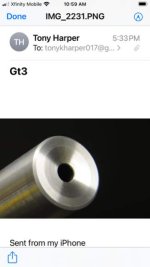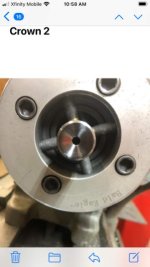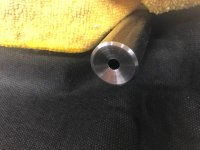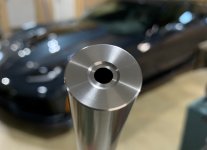tonykharper
Well-known member
Barrel crowns are not often discussed on the forums. Perhaps they aren't important and don't need to be discussed?
But since we cover them up with our tuners and other muzzle devices, I wonder how often they get looked at and checked for damage. After all, that rod and jag get pulled through the crown several times after each target.
There are many ways to cut a crown and I'm sure everyone has their own opinion on what works best, but I would like to show an 11-degree crown that I think works well.

This crown was cut by Mark Penrod, an excellent gunsmith from Indiana. If you look carefully, you will see Mark cut this about as good as one can be cut.
Here is another look at an 11-degree crown (not cut by Mark but still good).

Perhaps crowns aren't that important but one should at least take a look at yours from time to time.
They are one of the things that can be addressed fairly easily.
Please share your thoughts.
TKH (4628)
But since we cover them up with our tuners and other muzzle devices, I wonder how often they get looked at and checked for damage. After all, that rod and jag get pulled through the crown several times after each target.
There are many ways to cut a crown and I'm sure everyone has their own opinion on what works best, but I would like to show an 11-degree crown that I think works well.

This crown was cut by Mark Penrod, an excellent gunsmith from Indiana. If you look carefully, you will see Mark cut this about as good as one can be cut.
Here is another look at an 11-degree crown (not cut by Mark but still good).

Perhaps crowns aren't that important but one should at least take a look at yours from time to time.
They are one of the things that can be addressed fairly easily.
Please share your thoughts.
TKH (4628)
Last edited:



